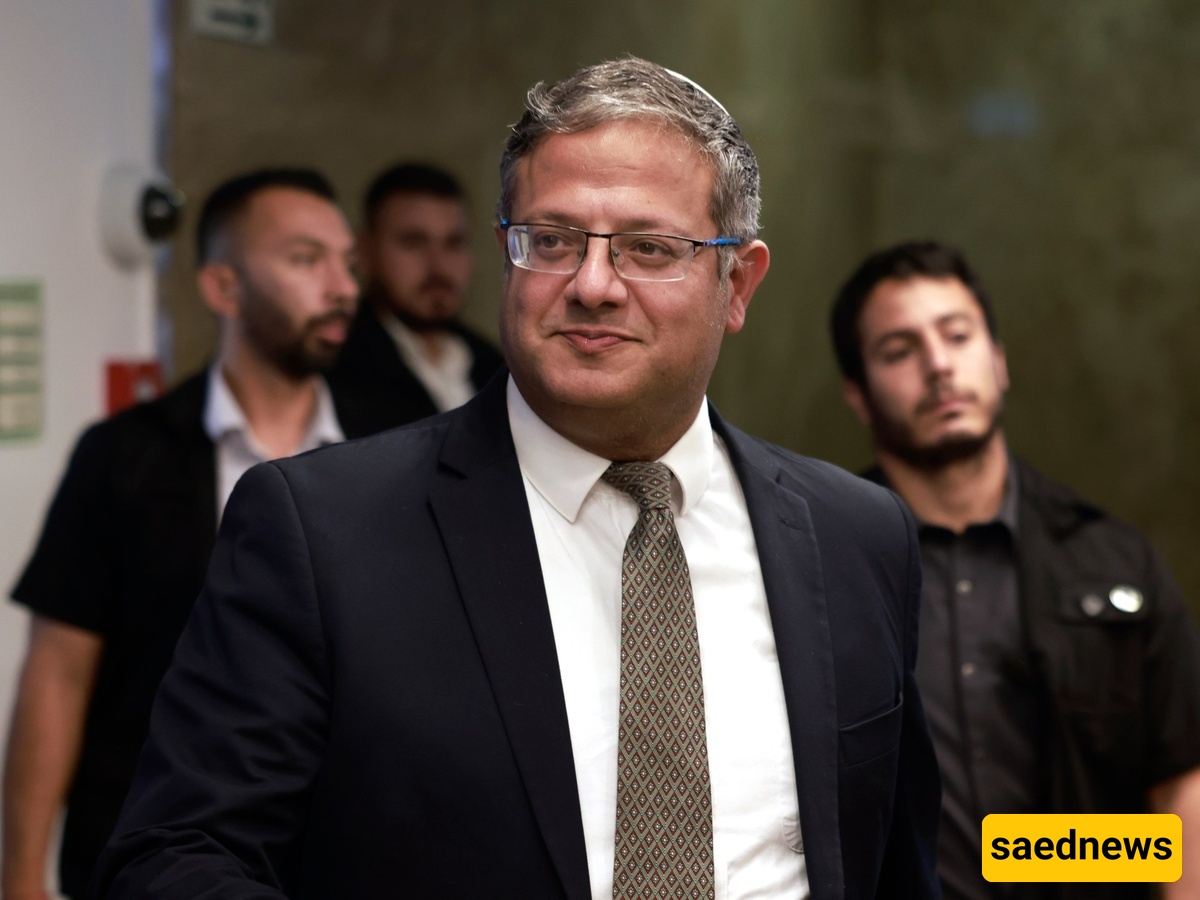SAEDNEWS: Itamar Ben-Gvir is a well-known figure within the far-right Zionist movement, whose ideological roots trace back to the teachings of Rabbi Meir Kahane—whose organization was even designated as a terrorist group in the United States.

According to Saed News, citing CNN, Itamar Ben-Gvir is a prominent figure within the far-right Zionist movement, whose ideological roots trace back to the teachings of Rabbi Meir Kahane—whose organization was designated as a terrorist group even in the United States. Ben-Gvir has long faced legal action due to his provocative behavior, including participation in inflammatory marches in Arab neighborhoods and support for racist slogans.
Now serving as a cabinet minister, many fear that his past actions may take on an institutional and official form. He has previously referred to visits to Al-Aqsa Mosque as the "right of Jews to reclaim the Temple" and has repeatedly claimed that Jewish prayers should be allowed at the site.
His recent move went beyond a religious or symbolic act; he entered as a minister, under heavy police protection and without coordination with the Islamic Waqf or the Jordanian government—the official custodian of the site. Experts view this not only as a violation of existing agreements but also as a deliberate test of regional tensions and responses.
Reactions: From Amman to Ankara, Gaza to the United Nations
Hours after the news broke, Jordan’s Ministry of Foreign Affairs condemned the move as a “blatant violation of international law” and “provocative.” The Palestinian Authority described it as an “attempt to Judaize Al-Aqsa Mosque,” while Hamas in Gaza called it a “turning point in religious confrontation and occupation,” threatening a harsh response.
Even Arab countries that have normalized relations with Israel, including the UAE and Bahrain, took a critical stance. Turkey and Iran also condemned the action. The U.S. State Department, in a statement emphasizing the importance of maintaining the status quo, warned that unilateral moves at holy sites could escalate tensions.
Israeli Prime Minister Benjamin Netanyahu, who has repeatedly promised not to change the status of holy sites, remained notably silent this time—a silence many interpret as a sign of weakness in the face of pressure from the far-right faction within his government.
Historical Experience: Is Another Intifada on the Horizon?
Ariel Sharon’s 2000 visit to the same site, although without any prayer or religious act, sparked the Second Intifada—a bloody uprising lasting over four years and resulting in thousands of deaths. Given the fragile and complex conditions in the West Bank today, some analysts warn that Ben-Gvir’s actions could trigger a new wave of violence and protests.
In recent weeks, sporadic clashes in the West Bank have increased, Palestinian cities face nightly raids by the Israeli army, and the overall atmosphere in Palestinian territories is highly tense. Ben-Gvir had previously called on the police to adopt a “heavier hand” against Palestinians, raising fears that the Israeli government is moving toward harsher crackdowns alongside increasingly provocative religious actions.
Al-Aqsa Mosque: Geography of a Global Crisis
The significance of Al-Aqsa Mosque goes beyond its religious value for Muslims; it holds a crucial place in the political identity of Palestinians and in Israel’s relations with the Islamic world. Any change to the status of this site could spark widespread protests across the Muslim world, diplomatic tensions with Arab countries, and even terrorist attacks.
Some experts argue that Ben-Gvir’s actions are part of a creeping process that challenges the current status not through legal means but via field operations, security measures, and symbolic acts—from changes in security patrol routines to increasing the number of Jewish visitors, and now official prayers.
The End of the Status Quo? Or Its Ultimate Test?
The reality is that the status quo at Al-Aqsa has been under threat for years, but an act like a far-right minister praying there, especially in the media spotlight, crosses previous boundaries. While this move alone may not trigger an explosion, it acts as a spark to a powder keg filled over years with discrimination, occupation, violence, and failed peace processes.
Will Netanyahu’s government be able to halt the path of escalation, or will its fragile coalition with extremist forces force it to continue down this road? Does the international community have the capacity to counter these creeping changes in Jerusalem, or will it once again be limited to issuing statements after the fact?
The answers to these questions will determine not only the future of Al-Aqsa Mosque but also the stability of the Middle East.

